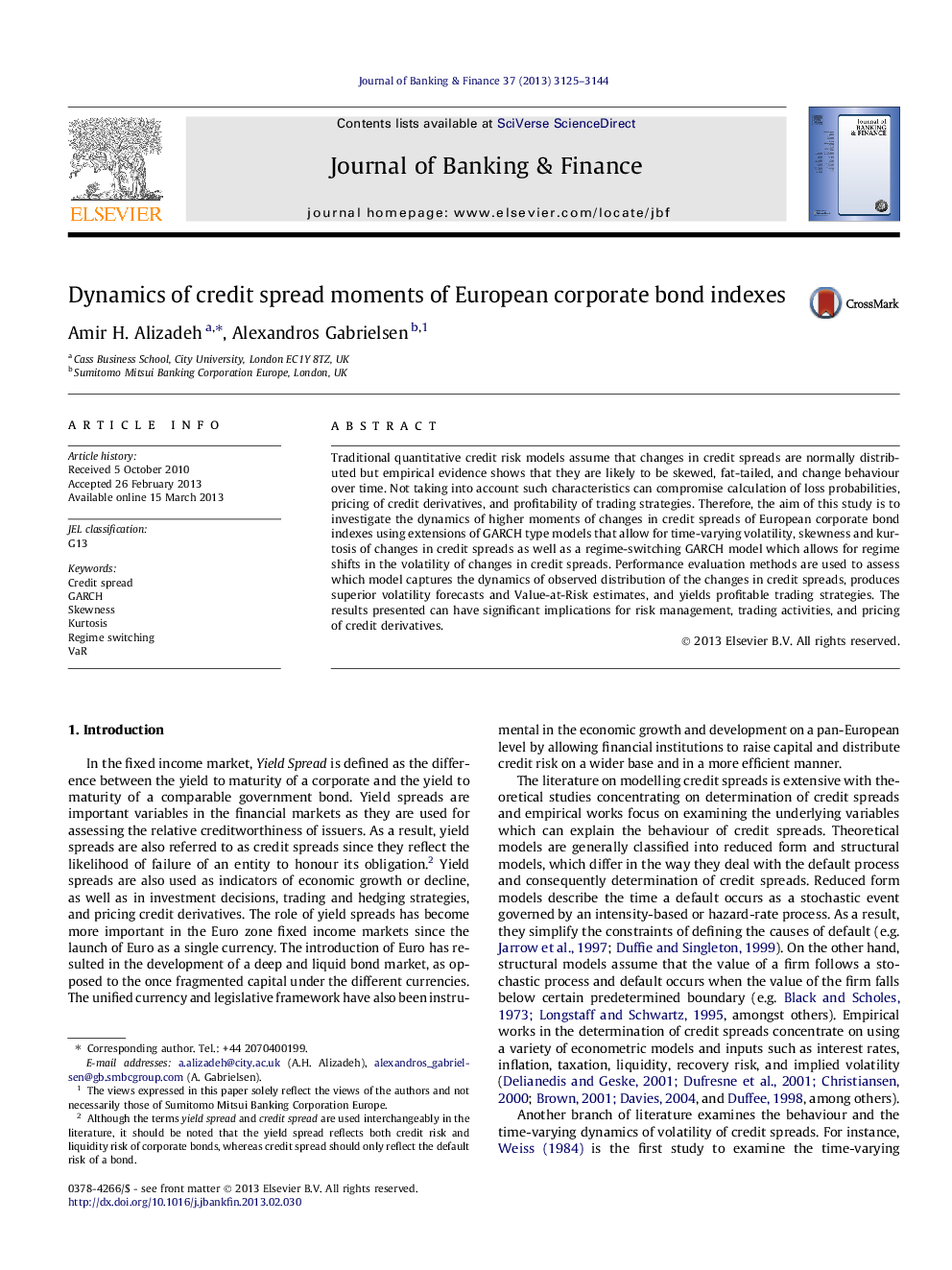| Article ID | Journal | Published Year | Pages | File Type |
|---|---|---|---|---|
| 5089301 | Journal of Banking & Finance | 2013 | 20 Pages |
Abstract
Traditional quantitative credit risk models assume that changes in credit spreads are normally distributed but empirical evidence shows that they are likely to be skewed, fat-tailed, and change behaviour over time. Not taking into account such characteristics can compromise calculation of loss probabilities, pricing of credit derivatives, and profitability of trading strategies. Therefore, the aim of this study is to investigate the dynamics of higher moments of changes in credit spreads of European corporate bond indexes using extensions of GARCH type models that allow for time-varying volatility, skewness and kurtosis of changes in credit spreads as well as a regime-switching GARCH model which allows for regime shifts in the volatility of changes in credit spreads. Performance evaluation methods are used to assess which model captures the dynamics of observed distribution of the changes in credit spreads, produces superior volatility forecasts and Value-at-Risk estimates, and yields profitable trading strategies. The results presented can have significant implications for risk management, trading activities, and pricing of credit derivatives.
Related Topics
Social Sciences and Humanities
Economics, Econometrics and Finance
Economics and Econometrics
Authors
Amir H. Alizadeh, Alexandros Gabrielsen,
